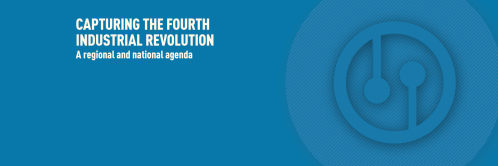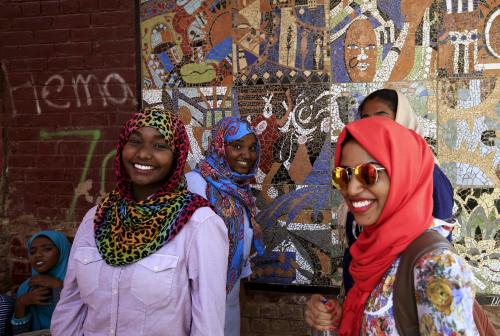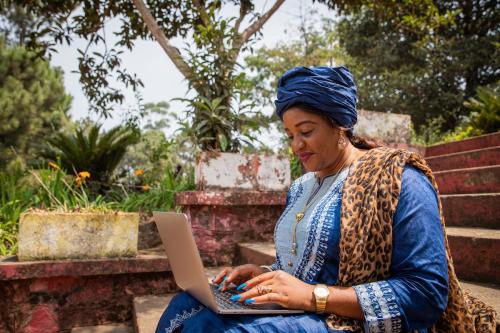Although sub-Saharan Africa has experienced an increase in education and literacy rates, the quality of the education remains below par: Sub-Saharan Africa has, for example, the lowest literacy rate of any world region. Similarly, 84 percent of children and adolescents have not achieved the minimum proficiency for mathematics; for context, the global average is 56 percent. These significant gaps in education have labor market implications, and education experts fear that many Africans are not learning the skills they need for 21st-century jobs. The World Bank’s most recent Future of Work in Africa report, published on June 21, 2020, uses self-reported data on LinkedIn users from 27 countries across sub-Saharan Africa to better understand the level of digital skills held by workers in the market. Each country observed had at least 100,000 members who were currently in the labor force (ages 15-65). While LinkedIn data is only available for the small, nonrandom subset of African populations using the platform and is correspondingly biased towards white-collar professionals employed in technology-intensive sectors, the data still offer valuable information on skills attainment where other sources of data are limited.
Figure 1, in which “relative penetration” is normalized to a value of 1.0 for the global average, shows that, compared to other world regions, sub-Saharan Africa is the lowest in both percentage of total labor force that uses LinkedIn—only 4 percent of the total population—and in terms of level of digital skills, with about half the average global level of digital skills adoption. The report highlights that citizens of Nigeria, Kenya, and South Africa have a higher level of digital skills than the rest of sub-Saharan Africa on average. For example, although only 17 percent of South Africa’s labor force is on LinkedIn, the country’s relative penetration of digital skills is slightly above the global average. Residents of Nigeria and Kenya also possess relatively high levels of digital skills, but have a smaller percentage of LinkedIn users within the total labor force. Despite lagging global levels of skill adoption, the report found that from 2015-2018, sub-Saharan Africa had higher growth in more transferable digital skills (such as digital literacy, web development, development tools, data science) than traditional data skills (such as tech support and computer networking), which is in line with global trends.
Figure 1. Digital skills in sub-Saharan Africa relative to other regions
Source: World Bank, Future of Work in Africa 2020.
Note: Parentheses show the share of LinkedIn users in the total working-age population of each country. “Relative penetration” is normalized to a value of 1.0 for the global average; a value of 0.5 implies that a country has 50 percent of the average global adoption level of digital skills.
Figure 2 shows that, across sub-Saharan Africa, there is significant heterogeneity in the types of digital skills prevalent in each country: In other words, according to the report authors, some countries need to catch up in the development of specific skills more than others. For example, South Africa has substantially larger penetration across a myriad of digital skills than Togo. More broadly, the authors find that countries with the most diversified digital skill sets also have higher overall digital skills penetration.
Figure 2. Relative penetration of various digital skills in sub-Saharan African countries
Source: World Bank, Future of Work in Africa 2020.
Note: Parentheses show the share of LinkedIn users in the total working-age population of each country. Relative penetration scaled by row for comparison across countries. The different shades of green and the white correspond to the degree of relative penetration. The darker the color, the higher the relative penetration of that specific skill in that country compared with others. Gray boxes indicate a relative skill penetration of zero.
To close the gap between sub-Saharan Africa and other regions of the world, and indeed between sub-Saharan countries themselves, the report argues that higher access to internet and electricity is needed. More specifically, the authors emphasize the need for broadband internet access as integral for the functionality of businesses because it decreases transaction costs. At the same time, improved internet access increases the demand for skilled workers: According to a paper published by Jonas Hjort and Jonas Poulsen in 2019, demand for highly skilled workers increased in sub-Saharan African areas with access to undersea high-speed cables from Europe. Given this evidence, the report concludes that, in order to spur the improvement of digital skills in Africa, there needs to be an emphasis on quality of education, higher access to internet, and better supply of electricity.
To read more about digital technology and its role in African development see “The Fourth Industrial Revolution and digitization will transform Africa into a global powerhouse” by Njuguna Ndung’u and Landry Signé and “The future of work in Africa: Opportunities and challenges of digital technologies” by Dhruv Gandhi.








Commentary
Figures of the week: Digital skills and the future of work in Africa
July 22, 2020